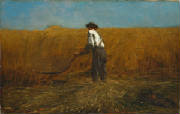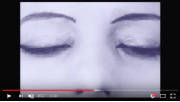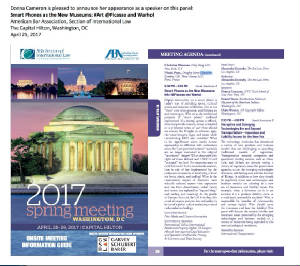|
|
Sunday, February 4, 2018
  Jane Fonda as Gloria in Sidney Pollack’s “They Shoot Horses, Don’t They?” (1969, ABC Pictures; Palomar Pictures; distributed by Cinerama Releasing Corporation) personifies the depression that overshadowed life in 1960s America. It was a time when bleak outlooks were the rule rather
than the exception. The Vietnam War was in full swing, and it was a senseless, conscienceless commodities crusade with no
morality curve, no human rights banner to unfurl in its wake. The 1950s Civils rights movement peaked, our great moral leaders
were gunned down while we witnessed our parents and politicians react in disbelief and shock. As youth, we understood to soon
what it meant to be helpless and lost on the way to a grim destiny. Our major networks broadcast grainy images of burning
villages, napalmed bodies and screaming children running naked and in tattered clothes from the smoke of battle in a world
most of us had heretofore heard of – southeast Asia. Lack of cultural context created a confusion in our minds that,
in retrospect, would defy any young person’s attempt to sustain a sense of self. American politics on
both sides of the aisle shared a national malcontent which too often terminated unexpectedly in someone’s personal desperate
measure. We wondered, where was the America of our idyllic 1950s, where everyone-has-a nice-house-on-a-nice-block-and-yes-boys-get-guns-and
girls-get-dolls for-Xmas? British rock music invaded the airwaves, Nixon was in the White House, Khrushchev was a threat,
contraband substance abuse was ubiquitous, the proverbial “walk on the wild side” was a perilous rite of passage
for we who now passed from adolescence into adulthood. Disillusionment with the “American Dream” brought on a loss of faith in traditional values, and riots,
protest marches, jailing, new allegiance to outsider religions of superstition, cult ritual and the serendipitous signs along
the highway of life ensued. We ran
on empty, without purpose often ambushed by our own demons who, like leering clowns escaped from a once lovely now shredded
big top, were all too terrifyingly real. The new American cinema itself was the only viable escape. I say “new”
because presentation and distribution changed the cinema experience that we had known in our childhood. Gone were the big
plush palaces, the curtained drama of the 1940s and 1950s and in their place the widescreens of a new generic kind of movie
house became our shared social mirror. Together, in the cinema, we reflected, pondered, and entered mise-en abyme into the
projector’s beam of light, witnesses to the historic upheavals of our time. In its own youthful rite of passage from
“real primitive” childish myth to mature narrative of social conscience, the cinema of the 1960s illustrated -as
did no other decade’s cinema prior to or after it- the premise of 20th century
film theorist André Bazin that cinema itself has not yet been invented. This idea was realized in us. We were the mythical
state of cinema, blurred between the screen world inside and the real world outside. We embodied the clear state of suspension
that Bazin envisioned the real cinema to be. Wrapped softly like so many embryos in a shared diffused glow, the time and space
between the imagined and the real was to each of us our own. I now appreciate the earlier film viewing of “They Shoot Horses...” in the context of Bazin’s words. Viewing
the film almost 50 years later, I remember how it felt to hear a stupefied Robert say “They Shoot Horses Don’t They?” After last week’s screening of the film I heard
shocked protests from other audience members, most of whom were the same age as I was when I first viewed the film. To persons
who have not experienced those times, I realized, a film such as They Shoot Horses Don’t They? was offensively depressing. Without a timely or socio-historic context, such as those broadcast images of the
Viet massacres of the 1960s which shocked us in our youth, this film is cruel, a senseless documentation of man’s inhumanity
to man, of the conscienceless exploitation of poverty as a marketable commodity, of betrayal by authority of the general population,
of ipso gratis ubiquitous and systemic misogyny and of a war economy which, in its absence, spurs suicide, heart failure and
economic depression. And, the narrative’s running metaphor is the Great Depression of the 1920s. Must history always
repeat itself? In 1969 this film was not depressing, it was uplifting.
We understood that someone understood Gloria, and Gloria was us. She was blown away by a friend, shot from a dumpy dark dock
and propelled (by jump cut) into a sunny, soft, glorious wheat field of dreams. Real world or art fantasy?As it does in Winslow
Homer’s post-Civil War painting of The Veteran in A New Field, (1865, oil on canvas) the waving wheat which
literally fields her in her death throw represents immortality and predicts a good harvest, a prosperous economic future.
Gloria was saved by an American buoy on a desperate sea of global sorrows, her last wish fulfilled. I related to Gloria (and
still do), to her feeling that her life is taken from her by social conditions beyond her control, and her every excellent
effort to advance herself, literally holding up and advancing her fellow man until the point where there's no point or where
she can't see what she wants anymore is vetoed. Labeled a loser by the MC-boss Rocky (Gig Young) of the Dance Marathon and offered a cheap sellout option to further defile herself by marrying for show money, Gloria is
robbed of her own juice. She can’t make the final play on that oval dance floor, an elusive carousel of potentiality.
Her deadened spirit is paralleled to a body that is reduced to live on a life support system. Robert (Michael Sarrazin) helped her out. This presents to the spectator a moral dilemma
that every war presents: where does the battlefield end? Is every citizen fighting at the front, a warrior? In peace, life
is sacred, hari-kari is murder and murder is wrong. In the place of battle, blood is shed, the rules of the game change. We
fought for peace, marched for peace, protested for peace. As in the Homer painting, Fonda's figure in the American wheat field
represents the dreamer. Homer's character is a farmer, as most Civil War soldiers were farmers. Fonda is the farmer betrayed.
America's wheat fields provided a bread basket for the world. Wheat is the grain that gives us bread, daily bread, bread to
be blessed, the daily bread of our Judeao-Christian mainstream religions. Homer's soldier has dropped his war uniform, gun
and cap and picked up a scythe to harvest, he has kept his faith. Fonda's corpse is landing in the field of wheat, her hope
and her faith have been raped from her, she is a bloody victim of a different war and incongruous to the historic wheat field.
Or, is the waving wheat field sprung from the blood of victims like her? Our wheat fields in the Vitetnam War era were our
battlefields overseas, i.e. unlike the Civil War, there was no emancipation proclamation, no fight for the betterment of humanity,
no struggle for truth. Fonda, in both her private life and in the roles she played, fought for peace. She was an advocate
for equal rights. Herein lies the power of Fonda.
As the film nears its semi-centennial, Gloria crystalizes
as a heroic casualty of a fight for fair play. There is no final justice in her metaphor, there is only more self-questioning.
She cannot sell her dream to win the contest short, in defending her honor she betrays Robert's trust and he, in his childish
delusion, equates her with an injured horse of his childhood. She sets herself up to be a victim of her own crime at his hands,
and he will be held responsible for it. In a way, she kills him too. Is she a martyr for a cause or a mass murderer, criminal
or criminally insane?
Or is she, like Homer's
farmer, a metaphor for the grim reaper? Her mise-en-scene misery dismantles in its motion between frames just as Homer's
farmer has shed his uniform on the canvas. Past roles are referential in the lower right corner of the picture window. Looking
forward, moving backwards, Gloria in her death bears witness to the alienation and moral struggles of the 1960s. Clearly, she encapsulates the era and her missile is launched into our present
day still packing a punch. The final brutal shot and cut reflects the hope of that time- the space program and Neil Armstrong’s
walk on the moon. Guided by the great director, dressed in the brilliant mise-en-scene and voiced from the powerful writing, Jane Fonda takes
a giant leap for all kind.
Friday, February 2, 2018
Bazin vs. Fan The Gaze https://vimeo.com/77459857 vs. Ballet Mécanique https://youtu.be/oWa2iy-0TEQ   The Gaze https://vimeo.com/77459857 Directors: Even Wu & Yiyang Liu; Cinematographers: Even Wu & Yiyang Liu; Producers:
Even Wu & Yiyang Liu; Editor: Even Wu; Official Selection of 2014 Cannes International Film Festival(Short Film Category) This short 2014 experimental video by Even Wu & Yiyang Liu is an interesting example of a cultural fusion of Asian and Western concepts. The central
theme of The Gaze also illuminates the glance of the viewer through a frame window, in a reflexive imperfect
state, and exhibits a potentiality that invites the spectator to move toward the total reality of the act of seeing without
really "seeing" at all. The split screen explorations allude to the idea of stereoscopy, the invention of which
coincided with that of photography and which ainspired the first animated pictures in the history of cinema. It brings into
play concepts argued by Bazin and Fan this week, it is a new take on the possibility of human and non-human perceptions, especially, the eyes and gazes of humans
intercut with the activity-response of machines and insects in an age of digital reproduction. The idea of spectator as voyeur,
extends the experiences of the various clips last week and it also brings to mind Victor Fan’s thoughts on the possibilities
of a joint cinema experience between East and West. I think
that Victor Fan raises an important point-in this week’s reading- that there is a vibrant global cinema beyond the borders
of Europe, Japan and the Americas. I agree with his point that Chinese filmmakers and critics between the 1920s and 1940s
considered their product to be part of a cross-cultural dialogue with the cinema of all nations, and that this consideration
remains one which has never been rightfully reciprocated. It would be interesting to approach this new video, The Gaze"
with more understanding of Asian cinema theory. Experiences like this support his advocacy. I do not, however, agree
with his idea that “Bazinian ontology” needs to be reworked to align itself with another theory, or that there
is necessarily an “aporia’ within its very paradigm. Fan maintains that Bazin’s core construct lies in the
guarantee of a “direct relationship between the image consciousness the viewer apprehends and the reality to which it
refers” This is not only a European concept, it may be seen as a universal one. He further states that 1. Bazin assumes
a true cinematographic image “is a trace of reality” and 2. this is challenged by the “digital image”
which is too easily constructed and manipulated. First of all- all images are constructed. All images are manipulated. No technique in this video is new and untried.
In the analog era, cineastes composed in16mm and 8mm, and even before the auteur-accessible video cams & omnipresent digital
technologies, there were many ways to superimpose, overexpose, alter fps, turn the world upside down, flash, solarize, stop
motion, freeze frame the film in the camera- A-B-C roll in an optical house, bi-pack, optically print, and more
on a printer---there has always been image manipulation.(As seen in the 1924 Ferdinand Léger film, Ballet
Mécanique.) Granted, fewer people had access to technology in the analog era than they do in digital age-
but this is not about the numbers of the makers of a cinema. I
disagree with Fan that Bazin is a small-minded provincial with an aporia “heart” issue, what Fan does at times
imply. Bazin himself has written that “cinema has not yet been invented”, yet lies in a myth generated in its
“real primitive”: not the “actual total real” of narrative. What is not forward in the writing of Fan or Bazin is the concept of the LATENT
image. This was so much a part of the philosophy of cinematography and photography before video/digital. Without latent image,
the very real construct and essential cinema planning of the latent image, the making of (and therefore the presenting of)
cinema became a changed game. The split screen
conflict between what the eye expects to see and the very real inescapable fact illustrated here is that the cinematographer’s
eye and hand materially records the “real” world and the viewer is a suspended receptor (As seen in the 1924 Ferdinand Léger film, Ballet Mécanique.). When, once upon a time, one was not sure of the outcome of the latent image
exposed inside of the camera, on the film, before the application of development chemistries, the intuitive and scientific
skills of the cameraperson was a vital link between the world of the human body and that of the eye’s perception. The
camera person, as the first spectator, really did embrace the absolute understanding of something that “can be understood
as a potentiality that can drive the spectators towards total reality, without fully actualizing it”, as Fan says. A
viewer can feel that cameraperson’s uncertainty and trust in the final cinematography. It is in the picture and the
editor responds to it too. It’s just a different feel. So, I disagree- it is not digital technology that “short-circuits”
a perceptual-referential relationship, it is the poetics of the process of creating the cinematographic image itself. In
this short digital film you can sense the relationship of the camera to the subject to the spectator. It is nuanced by there
is no sense of urgency, no anticipation of a latent image. It is simply not analog. This doesn’t mean it shorts circuits-
it is just different. I do vote for a better,
more inclusive way to access different global concepts and would be very interested in reading more Asian film theory. A comparative
theory volume would be terrific. Maybe the inclusion of the act of the camera is one such potential connector between Asian
and Western, analog and digital thought. I also agree with Fan’s observation that retroactively labeling a set of critical
writings on Asian cinema as “cinema film theory” may risk an imposition of an inappropriate temporal and cultural
construct onto those writings.
|
|
 |
 |
| ABA panelist, copyright law/smartphone technology |

|
| Moderated by Alexandra Darraby, The Art Law Firm, LA |
 |